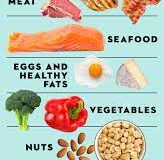Robots help make the pies at Zume Pizza — but that’s not the most whiz-bang aspect of the Mountain View startup’s technology. Instead, Zume’s secret sauce, so to speak, is a vibrantly painted truck the size of a FedEx delivery vehicle. Inside are 56 ovens that can quickly heat to 800 degrees to cook pizzas minutes before delivery.“It’s the same experience as having pizza straight from a brick oven,” said Zume CEO Julia Collins, a restaurant veteran who co-founded the company last year with Alex Garden, a former Zynga and Microsoft executive. The patented technology, which includes logistics software to fire up each oven at the right time, is a far cry from Domino’s ballyhooed DXP delivery vehicles, which merely include warming ovens, she said.
Despite the automation, Zume is pitching its pies, which range from $15 to $19, as artisanal, packed with fresh, locally sourced, responsibly farmed ingredients.
Pizza is a $40 billion industry in the U.S., “mind-blowingly large,” Collins said. Domino’s, Little Caesars, Pizza Hut and Papa John’s dominate the market, but there’s room for others hungry for a slice. Those huge numbers, along with Collins’ argument that Zume’s technology shaves costs, landed the startup about $10 million in venture capital, although it won’t say who funded it.
Zume is rolling out its first baked-on-the-way truck Thursday throughout Mountain View after having won approval from Santa Clara County health regulators. It will have three trucks soon and will expand to San Jose by the end of the year, coming to San Francisco and other parts of the Bay Area in the next 18 to 24 months. After perfecting its model here, Zume plans to go nationwide and even global, Collins said.

Photo: Santiago Mejia, Special To The Chronicle
“It’s got a lot going for it,” said Kit Yarrow, a consumer psychologist and author of “Decoding the New Consumer Mind: How and Why We Shop and Buy,” a book about instant gratification. “We’re in love with technology advances today, rather than skeptical of them. Consumers, especially younger ones, crave excitement in food; they have innovative palates.”
But of course, she said, the ultimate factor for success is taste. “The big question mark: Is it really yummy?”
Zume has been delivering in Mountain View since spring, but not using its street-legal ovens. It has 4 out of 5 stars on Yelp, with 105 reviews. Negative reviews had comments like “bland, white bread dough,” while positive ones mentioned “fresh and exciting ingredients.” Most said the delivery was fast and appreciated the no-tips policy.
Collins said its Yelp reviews were better than those of rivals, although most nearby pizzerias also averaged four stars.
Food industry analyst Phil Lempert, who runs the SupermarketGuru website, said pizza automation isn’t an original idea, citing pizza-making vending machines in Japan and the United Kingdom. The pizza behemoths are also trying to inject technology. Domino’s is testing a pizza-delivery robot named Dru in Australia. Pizza Hut has several patents, some dating back to the 1980s, on built-in ovens in trucks, and it is working in Asia on a robotic cashier named Pepper.
Still, Lempert said, pizza is so popular and has such high margins that it lends itself to experimentation. “Silicon Valley loves food and wants to reinvent it,” he said. “Pizza is fun, so they can try to add some sizzle to it. I think we’ll see a lot more innovation in pizza.”
Might consumers push back against companies using automation because that costs jobs? Lempert said most people realize that hiking the minimum wage to $15 an hour will mean fewer jobs and more automation.
The jobs supplanted by the robots tend to be lower-paid work. “Those folks deserve to continue to get skills and resources to progress through their careers,” Zume’s Collins said, adding that Zume sponsors educational opportunities for its line cooks.
The company has 18 full-time employees and 32 part-timers, including “pielots,” its name for delivery drivers, who make $17 to $20 an hour. Kitchen workers, mainly part-timers, are led by an executive chef who supervises prep cooks, who make the dough, prepare toppings and add them to the pies after the pizza robot spreads the sauce. Another robot puts the pies in an oven to partially bake them before they are loaded into the truck. Eventually robots will take on more work.
While the company said baking en route means customers will get their orders faster, if a truck makes 56 stops, one might assume that those at the end of the route will have a pretty long wait.
Sophisticated logistics software turns on each oven when the truck is four minutes away from that pizza’s destination. A combination of gas and electricity, fueled by a 50-kilowatt generator, heats for 3.5 minutes, then allows 30 seconds for cooling. (Collins wouldn’t say how long it takes the ovens to get to the full 800 degrees.)
At the push of a button, a metal conveyor belt ejects the pie onto a Zume box made out of biodegradable sugarcane fiber. Ridges on the box’s bottom allow air circulation and prevent soggy crusts. The operator cuts the 14-inch pie into eight slices and brings it to the door.
Collins sees Zume in big-picture terms, not just disrupting pizza, but “helping people have access to high-quality foods. Being able to leverage the power of next-generation, highly intelligent robots allows us to put better food onto America’s tables.”
SFChronicle

















